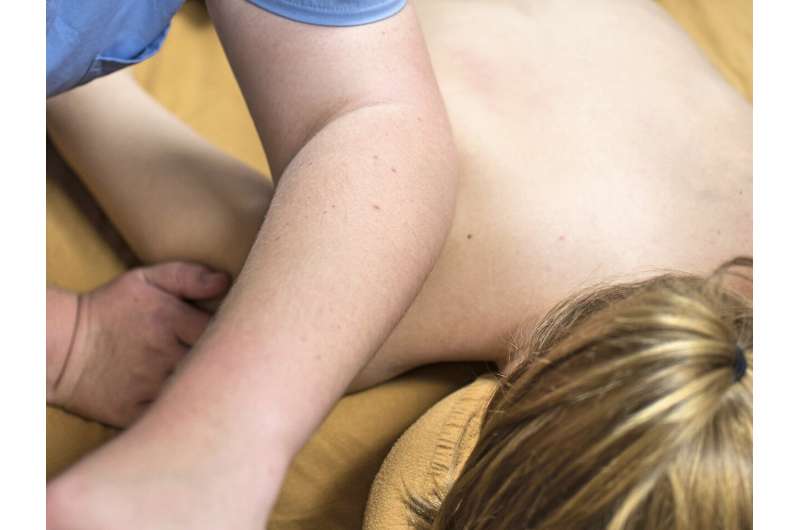
In a small study of gymnasts with ulnar (elbow) collateral ligament injury, orthopedic sports medicine researchers found that the athletes can be treated successfully and can return to competition. The research was presented at the American Orthopedic Medicine Society- Arthroscopy Association of North America Combined 2021 Annual Meeting.
While results following ulnar collateral ligament injury in baseball players has been well documented, results following UCL injury in gymnasts are not as well documented. A research team from Rothman Institute at Thomas Jefferson University Hospital in Philadelphia presented the data.
An orthopedic research team led by first author Taylor D’Amore MD, followed and evaluated 9 gymnasts who underwent non-operative and operative UCL injury treatment. The patients were assessed using a variety of scoring methods, including the Mayo Elbow Performance Score (MEPS), Andrews-Timmerman (A-T) Elbow score, Quick Disabilities of the Arm, Shoulder and Hand (qDASH) score, Kerlan-Jobe Orthopedic Clinic Shoulder and Elbow Score (KJOC) and a custom return-to-play survey.
Of the 9 patients analyzed, 6 patients were treated operatively (4 UCL reconstructions [UCLR] and 2 UCL repairs) and 3 patients were treated non-operatively. One UCLR was performed after 2 months of failed non-operative management. All patients were female with a mean age of 16.1 (range: 12-20) and mean BMI of 24.46 (range 19.2-34.1) at time of surgery or initial visit. Average follow-up was 4.5 years.
Overall, 66.7% of operative versus 100% of non-operative were able to return to play at an average of 7.5 and 7 months, respectively. One re-injury was reported in the non-operative group, which was a re-dislocation of the elbow unrelated to gymnastics and was ultimately treated non-operatively. The mean KJOC, MEPS, A-T and qDASH scores for the operative group were 68.4, 97.5, 90.8 and 1.9 respectively. The mean scores for the non-operative group were 67.4, 71.7, respectively. At final follow-up, the operative group had significantly superior (p < 0.05) MEPS, qDASH, current pain at rest, and SANE scores.
Source: Read Full Article
